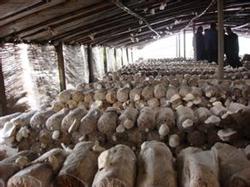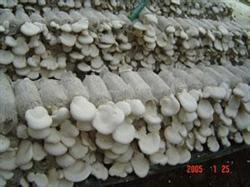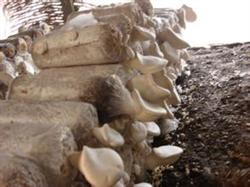Method for fermenting culture material of Pleurotus nebrodensis

Pleurotus ostreatus, also known as Pleurotus ostreatus, its fruiting body is white, the flesh is thick, the meat is delicate, crisp and delicious, and it has high nutritional value, medicinal value and economic value. it is a kind of rare edible fungus which has developed rapidly in the north of China in recent years. However, many mushroom farmers in the fermentation methods of cultivation materials, due to lack of cultivation experience and poor grasp of technical essentials, resulting in low yield and low economic benefits of bag cultivation of Pleurotus ostreatus, which affected the enthusiasm of mushroom farmers. Using corncob and sawdust as cultivation materials, the specific methods of fermentation are introduced as follows: 1. Formula. ① corncob 80%, rice bran 12%, corn flour 4%, gypsum 1%, calcium superphosphate 1%, lime 2%. ② corncob 50%, hardwood sawdust 30%, rice bran 10%, corn flour 6%, gypsum 1%, calcium superphosphate 1%, lime 2%. ③ in the above two formulations, Gymboree starter should be added about 5% to improve the fermentation quality. 2. Preparation and fermentation treatment. Choose a mildew-free corncob, crush it into the size of broad bean kernels, take all kinds of raw materials according to the formula, mix fully, mix well with water, and the water content is 65%, that is, hold the culture material by hand, and it is appropriate to see water at finger seams without dripping during moderate force. After the material fully absorbs water, the prepared material is piled into a pile with a height of 1 to 1.2m, a width of 1.5m and an unlimited length, and the pores are opened with a stick about 5cm in diameter, and the pore distance is 40cm, deep to the bottom of the stack. Then cover the material tightly with plastic and straw curtains, and turn the pile when the central material temperature reaches 60-70 ℃. After re-stacking, the fermentation continued, and when the temperature of the material rose to 60-70 ℃, it was turned over for the second time for a total of 3-4 times. When the material is brown, soft and elastic, and has a special flavor, it shows that the material has been fully fermented, and finally replenish the moisture to 65%, then it can be bagged.
- Prev

The proportion of raw materials for cultivation of Pleurotus ostreatus should be reasonable.
Bailing mushroom is a new mushroom developed in recent years, because the development history is relatively short, so there are still many problems in cultivation techniques, especially the total output has not been raised, and the biological conversion rate of some mushroom farmers is less than 20%. Even in the case of high price, the economic benefit is also very general. A pen.
- Next

Cultivation techniques of Pleurotus ostreatus
The production of mushroom rods and the formula of cultivating mushroom rods: (1), cottonseed hull 92%, corn meal 3%, wheat bran 5%, water content 65%. (2), cottonseed hull 70%, corn meal 3%, sawdust 20%, wheat bran 7%, gypsum 2%, quicklime 5%, water content 65%. The preparation before production is usually in mid-August in Jixian County.
Related
- Fuxing push coffee new agricultural production and marketing class: lack of small-scale processing plants
- Jujube rice field leisure farm deep ploughing Yilan for five years to create a space for organic food and play
- Nongyu Farm-A trial of organic papaya for brave women with advanced technology
- Four points for attention in the prevention and control of diseases and insect pests of edible fungi
- How to add nutrient solution to Edible Fungi
- Is there any good way to control edible fungus mites?
- Open Inoculation Technology of Edible Fungi
- Is there any clever way to use fertilizer for edible fungus in winter?
- What agents are used to kill the pathogens of edible fungi in the mushroom shed?
- Rapid drying of Edible Fungi

